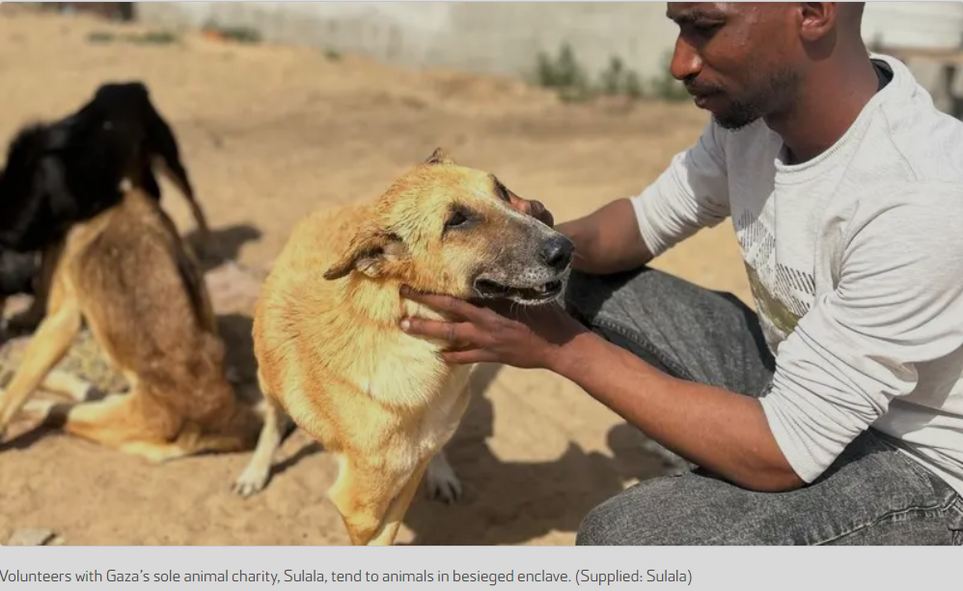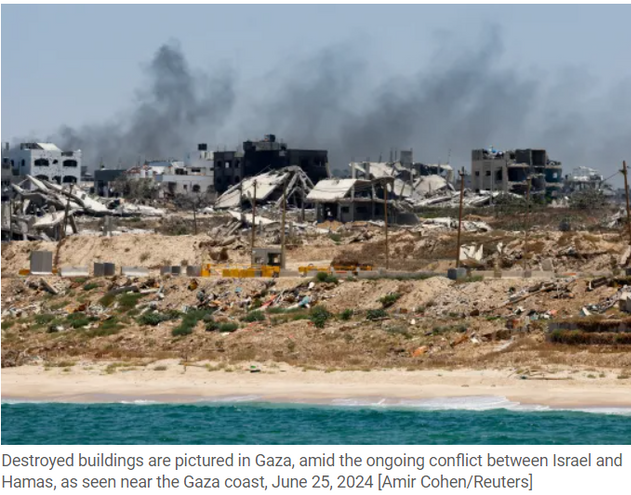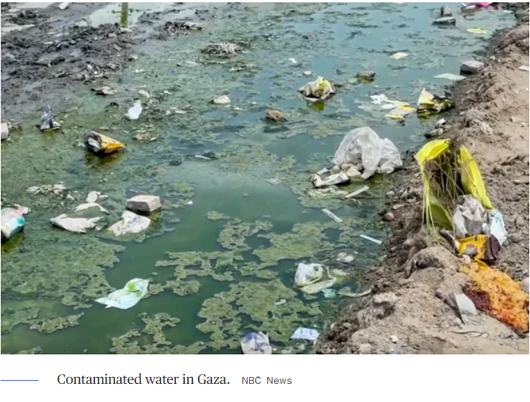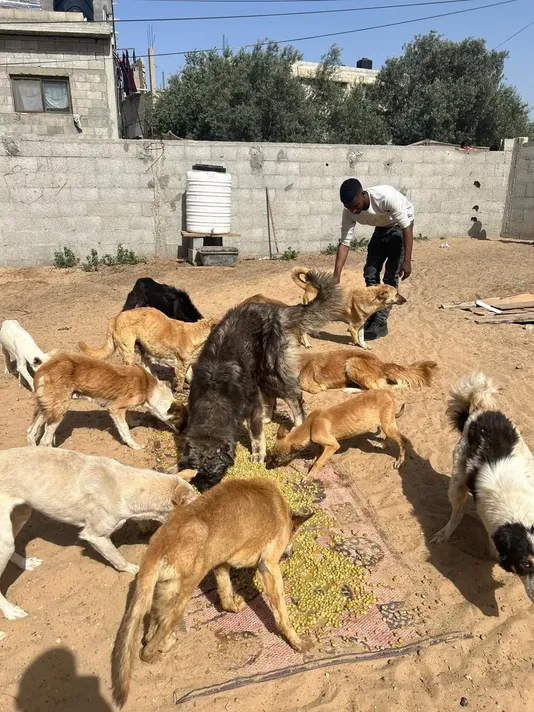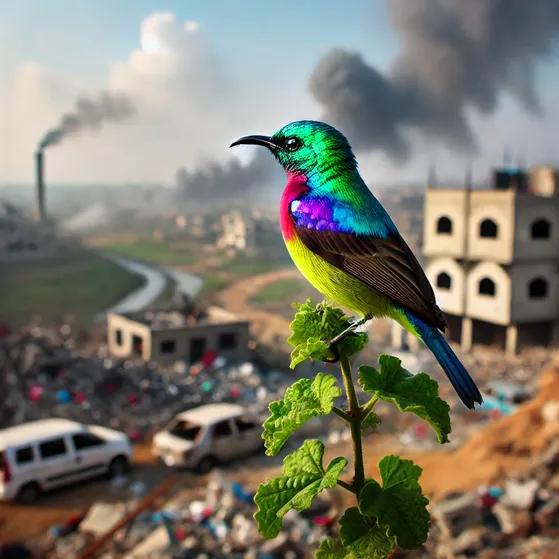23.09.2024
The Loss of Animal and Natural Life After War in Gaza
Photos and videos of dead animals, emaciated dogs, starving cats and flocks of birds in Gaza have been circulating on social media since the war began in early October.Many were killed, but others starved to death. The survivors are traumatized. Some also suffer physically in the absence of veterinary care.
The ongoing conflict in Gaza has drawn global attention to its devastating human toll, but often overlooked is the equally tragic loss of animal and natural life. The region, rich with biodiversity and unique ecosystems, faces severe destruction every time violence erupts. As the bombings and artillery strikes take their toll on cities, forests, and agricultural lands, they also devastate the delicate balance of nature.
In this blog post, we’ll explore the devastating impact of war on animals, plants, and ecosystems in Gaza, using statistics, visual imagery, and facts from environmental experts and researchers who have monitored the region.
1. Destruction of Habitats and Ecosystems
Gaza’s environment is part of a broader coastal ecosystem that stretches along the eastern Mediterranean, hosting a wide range of flora and fauna. But years of war, blockades, and industrial overdevelopment have seriously degraded this natural landscape. War amplifies the damage tenfold.
Impact on Wildlife Habitats
Habitats such as coastal wetlands, forest patches, and agricultural lands are vital for the survival of countless species, from migratory birds to small mammals and reptiles. War devastates these landscapes, not only directly through bombings but also indirectly through the pollution of air, soil, and water resources.
One significant loss is seen in the destruction of Gaza's coastal areas. These zones were once critical nesting and feeding grounds for migratory birds like herons, storks, and flamingos. The coastal ecosystem, however, has been decimated by infrastructure damage and pollution from war activities.
Coastal Destruction in Gaza
Decline in Key Species
Data collected by Palestinian environmental organizations and international researchers show that species populations in Gaza have suffered dramatic declines. Birds, such as the Eurasian hoopoe and turtle doves, once abundant in the area, are now considered endangered due to habitat destruction and environmental degradation. Moreover, small mammals like foxes and porcupines, already endangered due to human encroachment, have seen their numbers dwindle to critically low levels.
2. Water Contamination and Its Impact on Life
Water resources, essential for both humans and animals, are often the first casualty in a war-torn region. Gaza has faced severe water crises due to the destruction of its water infrastructure during repeated bombardments. This has left not only people but also animals without access to clean drinking water.
Pollution in Water Sources
According to UN reports, about 97% of Gaza’s freshwater is undrinkable due to contamination by sewage, agricultural runoff, and seawater intrusion. War has exacerbated this problem, with bombings damaging water treatment plants and sewage infrastructure. This has led to the contamination of groundwater aquifers, rivers, and even the sea, further harming marine life.
Fish populations in the Mediterranean off the coast of Gaza have been severely affected by toxic run-off and increased chemical pollution. Local fishing communities report catching fish that are undersized or showing signs of disease, indicating that the war's impact reaches even beneath the water’s surface.
Impact on Agriculture
Animals, particularly livestock, also suffer from water scarcity. Farmers in Gaza report the deaths of thousands of cattle, goats, and sheep due to lack of clean drinking water and food supplies. The destruction of farmlands during airstrikes and artillery bombardments makes it difficult to grow crops, leading to food shortages for both people and animals.
3. Poisoning of the Air and Soil
War doesn’t just destroy physical structures; it alters the composition of air, soil, and water in ways that can cause long-term damage to life forms. The use of explosives, artillery shells, and incendiary devices introduces a range of toxic chemicals into the environment.
Air Pollution and Its Consequences
One study conducted by the Palestinian Environmental Quality Authority found alarming levels of toxic substances such as lead, mercury, and depleted uranium in the air after prolonged fighting. These chemicals settle into the soil and water, affecting both wildlife and plant life.
Birds, in particular, are highly vulnerable to air pollution. Migratory species that pass through Gaza suffer from disrupted navigation patterns due to smoke and chemical-laden air. Additionally, long-term exposure to pollutants reduces their fertility and lifespan.
Degradation of Soil
The repeated use of heavy artillery and bombs also destroys the soil structure, rendering it infertile. This has lasting effects on plant life, as crops fail and wild plants lose their foothold. Many of Gaza’s forests and agricultural lands have already suffered from desertification, and the ongoing war only accelerates this process.
Farmers who used to rely on olive trees—a symbol of Palestine and a crucial source of income—have seen their groves reduced to dust. This not only impacts their livelihoods but also eliminates an important food source for many animals.
4. Loss of Biodiversity
Biodiversity is crucial for maintaining the health of an ecosystem. Each species plays a role in supporting the environment, from pollination to seed dispersal and pest control. The destruction of habitats, coupled with pollution, inevitably leads to a decline in biodiversity.
Endangered Species in Gaza
A number of species in Gaza were already endangered due to human encroachment and environmental changes, but the war has pushed many closer to extinction. The endangered Palestine sunbird, a small but vibrant species native to the region, is now rarely sighted in its former habitat. Other species, such as the Arabian gazelle, have all but disappeared from the region.
Statistics on Biodiversity Decline
A 2022 study by the Society for the Protection of Nature in Israel found that Gaza’s biodiversity had declined by approximately 40% since the early 2000s, with a particularly sharp drop after periods of intense conflict. Experts attribute this to habitat destruction, pollution, and the introduction of invasive species, which thrive in war-damaged ecosystems.
Image showing the bright, colorful Palestinian sunbird among a war-torn landscape
5. The Impact on Marine Life
Gaza's Mediterranean coast, once teeming with marine life, is now heavily affected by war. Overfishing, industrial waste, and pollution from war activities have depleted fish stocks, threatening both the environment and local fishermen's livelihoods.
Depleted Fish Stocks
A report by the Environmental Quality Authority in Gaza highlighted a 30% drop in fish populations in the Mediterranean due to overfishing and toxic water. Species like sardines, mackerel, and grouper are now scarce, leading to the collapse of the fishing industry in the region.
Impact of Explosions on Marine Life
Underwater explosions, whether from naval bombardments or aerial strikes, have devastating effects on marine ecosystems. The shockwaves kill fish, destroy coral reefs, and disrupt the delicate balance of marine life. Furthermore, oil spills from damaged fuel depots near the coast contribute to the pollution, creating a hostile environment for marine organisms.
Conclusion: Rebuilding Nature Amid Conflict
The loss of animal and natural life in Gaza is a stark reminder of how deeply war can penetrate every aspect of existence. While international organizations focus on human recovery efforts, there is a growing need to also prioritize environmental rehabilitation. The damage inflicted on Gaza’s environment will take decades to heal, and without action, some species and ecosystems may never recover.
Conservation efforts, environmental protections, and the cessation of conflict are crucial if the region's natural life is to survive and thrive once more. By recognizing the interconnectivity of human and environmental health, we can begin to address the devastation in Gaza holistically.

